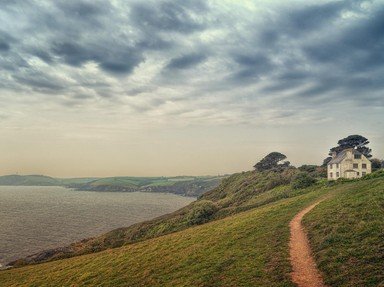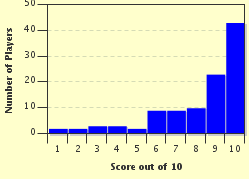Quiz Answer Key and Fun Facts
1. Cornwall is a peninsula in south-west England, with a northern coastline on the Atlantic Ocean and a southern coastline on the English Channel. Its only land border is with the neighbouring county of Devon to the east. What is the name of the river that defines Cornwall's boundary with Devon?
2. Tintagel castle consists of the ruined remains of a 13th century medieval castle, which were built on an even older site dating back to at least the Roman period. However, the castle is more well-known for its connection with which legendary figure?
3. A large area of northern Cornwall is covered by Bodmin Moor, most of which is classified as a Site of Special Scientific Interest (SSSI). What is the name of Cornwall's highest point, located on the moor?
4. Which Cornish village, a popular tourist destination and location for the television documentary 'A Seaside Parish', was severely damaged by flooding in August 2004?
5. Newquay, a town on the North Cornish coast, hosted the Beatles for three days in 1967 whilst they were filming their 'Magical Mystery Tour'. However, it is better known as a centre for which sport?
6. The most southerly point of mainland Great Britain is located in Cornwall. What is it called?
7. Cornwall's geology has been a key part of its economy, with tin mining believed to have begun in the area during the Bronze Age. However, the geology also means that Cornwall has the highest levels in the UK of which naturally occurring radioactive gas (atomic number 86)?
8. One of Cornwall's best known tourist attractions is a tidal island, topped by a castle and the remains of a former abbey, and connected to the mainland by a causeway. What is the name of this striking Cornish feature?
9. The Isles of Scilly are a small archipelago located approximately 28 miles from the mainland. However, they are historically part of the ceremonial county of Cornwall. What is the name of the largest island, which accounts for approximately forty percent of the Isles of Scilly's total land area?
10. Land's End is the most westerly point in both Cornwall and England. It is a popular starting point for many charity fundraising challenges where people journey from Land's End to which location in north-east Scotland?
Source: Author
Fifiona81
This quiz was reviewed by FunTrivia editor
spanishliz before going online.
Any errors found in FunTrivia content are routinely corrected through our feedback system.

